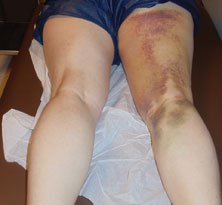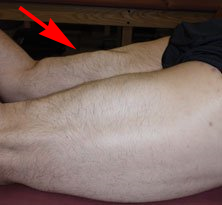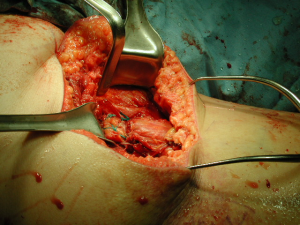
Chicago White Sox lose Madrigal to season-ender proximal hamstring injury
Anyone who is a Chicago White Sox fan, or even a baseball fan, can’t help but wonder how their new Manager, Tony La Russa is able to put a winning lineup together with all the player injuries the team has had including one just added to the list, second baseman Nick Madrigal. Madrigal attempted to beat out a grounder in the seventh inning of their game against the Toronto Blue Jays and stretched his right leg to beat the tag. He didn’t and was helped off the field. Team doctors said he suffered a proximal tendon right hamstring tear that required surgery and he will miss the rest of the season.
Although Dr. Chudik is not treating Madrigal, he has seen and treated hundreds of similar cases during his 23 years of practice on both competitive athletes participating in sports and the recreational “weekend warriors.”
According to Dr. Chudik, the most common mechanism for athletes to strain their hamstring muscle is while sprinting or kicking, as in Madrigal’s injury when he sprinted to first base. “As the leg swings forward rapidly with kicking or sprinting, the hamstring fires eccentrically to slow your leg down at the end of the stride or kicking movement,” Dr. Chudik explained. “The powerful eccentric contraction (elongation) of the hamstring muscle typically results in a strain (tear) at the muscle tendon junction with limited separation, bleeding and inflammation at the site,” he added.
The hamstring is actually three muscles that stretch from the hip down the back of the thigh attaching to the back of the knee with tendons. The hamstring is important for bending and stabilizing the knee and straightening the hip. It also is used to run and jump. Hamstring tears, or more accurately strains, are the most common injury to the thigh and have three levels of severity. Grade 1 is a slight pull without loss of strength. Grade 2 is a partial tear and decreased strength, and Grade 3 is a complete rupture. Most hamstring strains will heal with rest and physical therapy in a couple of weeks. Only some Grade 3 tears require surgery.

Arrow indicates the deformity that occurs after a proximal hamstring rupture (tear)
A proximal hamstring tendon avulsion (tear) of the muscle attachment to the pelvic bone, like Madrigal’s injury, usually requires surgery within a few weeks. Delays in a diagnosis may allow the tendon to retract further, resulting in permanent shortening of the hamstring muscles to a point where it may not be able to be re-attached to the bone without more complex surgery. If the tendon it isn’t repaired, you will experience permanent pain and hamstring dysfunction that prohibits running. Therefore, if you think you pulled or injured your hamstring it is important to have it evaluated by a sports medicine specialist as soon as possible.
Dr. Chudik explained proximal tendon tear surgery repairs the tendon to bone, restores strength and prevents later disability, weakness and discomfort. “Without repair, there is a permanent loss of hamstring strength and endurance and sometimes, irritation of the sciatic nerve,” he said.

Surgically repaired proximal hamstring tendon
Typically, physical therapy begins two to three days after surgery and continues for four months. Recovery requires wearing a hinged knee brace locked with the knee bent for six weeks and the hip to remain straight to protect the repair. This can be challenging because it means no lying on your back, sitting on a chair/toilet normally, or riding in a car normally, etc. After six weeks, you progress to touchdown weight-bearing with the aid of crutches for another six weeks. Depending upon recovery, driving can resume when you’ve been out of the brace and off crutches for six weeks.
“The success of proximal hamstring repair is highly dependent on the post-operative rehabilitation. It is crucial to follow through and maintain a proper physical therapy schedule and then gradually resume a progressive athletic training program which the White Sox athletic trainers are sure to monitor carefully so Madrigral is ready to play next season,” Dr. Chudik said.
If you or someone you know has suffered a knee, shoulder or sports injury and needs to have it thoroughly examined and diagnosed so the proper treatment can begin, you can schedule an appointment online or by emailing Dr. Chudik’s office at contactus@chudikmd.com./
To learn more about hamstring injuries, prevention and rehabilitation, read this article published in the Orthopaedic Surgery & Sports Medicine Teaching & Research Foundation’s (OTRF) e-newsletter and an educational handout from Dr. Chudik available on his website.







